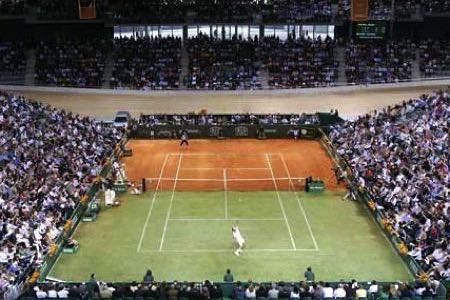
Though sports like football can sometimes be played on strange surfaces thanks to the existence of the likes of astroturf pitches, generally speaking, it is a game played on grass. That is especially true at the professional level, although there are some pitches in countries, such as Russia, that are made to withstand the low temperatures. When it comes to tennis, however, players get used to playing on several different types of surface, all of which offer something different in terms of what to expect from how the ball reacts.
Naturally, players come to favour one type of surface over others, such as Rafael Nadal being a master of the clay court and Roger Federer being one of the best there has even been on the grass. It doesn’t mean that such players can’t still perform well on the other types of surface, just that they like some more than others. For that reason, Nadal and Federer were asked to play one another on a court that was made up of half grass and half clay in a match that was dubbed the ‘Battle of the Surfaces’, with Nadal emerging as the winner.
The Different Surfaces of Tennis
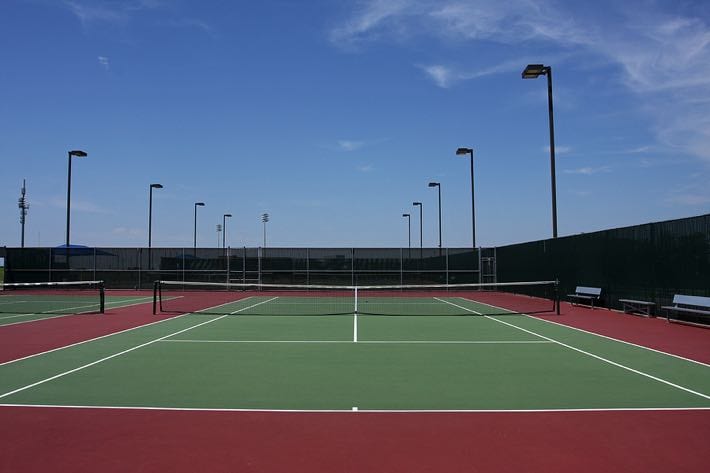
Before we look at the match between Federer and Nadal, it is worth taking a moment to explore the different surfaces that tennis players are asked to play on during the season. There are three main surface types that are used on professional tennis tours and it is fair to say that normal players are unlikely to have played on surfaces like them unless they are members of expensive clubs. Here is a quick look at each of the surface types, as well as some of the venues that use them:
Grass Courts
The type of tennis court that most people will think of when they imagine a game of tennis being played is also the most under used on the tour. The traditional surface used for tennis when the game was created in England, it is now restricted mainly to Wimbledon when it comes to the Grand Slam tournaments. It is a quick surface, on which the ball bounces low, which tends to result in short rallies. Players need to be quick to the ball and so it tends to favour serve and volley players over those that prefer longer rallies.
Hard Courts
The name does plenty of the heaving lifting here in the sense of explaining what type of surface this is. It is the most rigid of the surfaces, boasting a uniform and rigid material that then gets an acrylic layer put on top. It is good for play all year round, which is what makes it so popular across the world. It is the surface that is used for both the US Open and the Australian Open, with the precise material used dictating the sort of play that you’re likely to see. It is not as fast as grass, but still offers a degree of speed to the ball.
Clay Courts
Typically made up of crushed brick, shale or stone, the nature of clay surfaces is such that the ball is slowed down and bounces much higher than on grass or hard courts. Rallies therefore tend to last for much longer, which is suitable for baseline players and those that like to use spin or find angles. It reduces the advantage of having a big serve, which is why the dominant servers don’t tend to do as well as more tactical players when the French Open comes around. For some, this is the surface for the purest tennis.
The Battle of the Surfaces
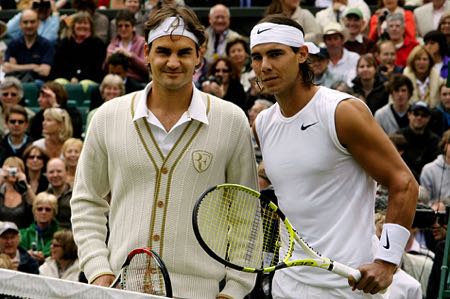
At the start of May 2007, Roger Federer and Rafael Nadal were invited to take part in an exhibition match in Palma de Mallorca. Mallorca, of course, was Nadal’s home, meaning that the crowd at the Palma Arena were decidedly biased in terms of which of the players they were hoping would win. At the time, Federer was the top ranked players in men’s tennis, whilst Nadal was the world number two. As a result, the pair had faced each other many times and there was nothing unique or interesting about the match up, per se.
What made it an interesting one was the fact that the course wasn’t a standard tennis court. Instead of being made up of just one type of surface, the tennis court used that day was half clay and half grass, having cost $1.63 million to build across the course of 19 days. Though the match was only a friendly exhibition, it was a chance for the two players to prove that they were the best in the world, given that they changed ends and therefore had to adapt their game as they went depending on which of the surfaces they were playing on.
Why the Match Took Place
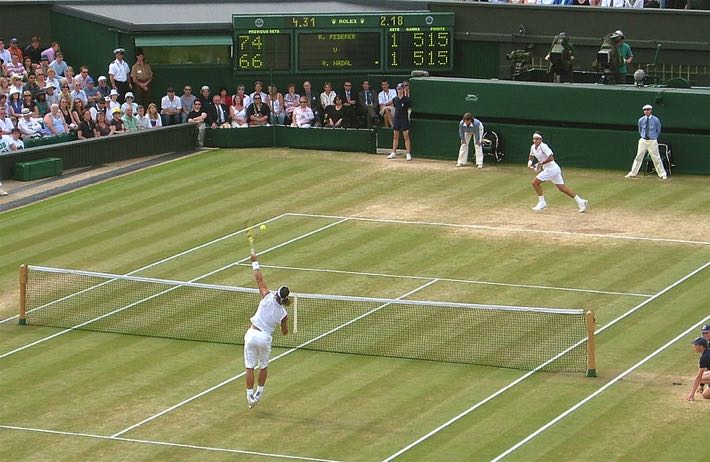
Though the idea is obviously a fascinating one, you would be forgiven for wondering why it was that the two players agreed to take part in it. For his part, Nadal later admitted to being concerned that it would be a ‘disaster’ because of how difficult it would be to adapt to the different surface types. The reason why they both agreed was because they were each the undisputed champion on their own surface at the time. It was well known that Nadal favoured clay, having won 72 successive victories on it heading into the match.
Federer, meanwhile, had not been defeated on grass for 48 matches as he headed into the ‘Battle of the Surfaces’. Before the match, Federer said, “We are both looking forward to this absolutely new event. The idea really appeals to me as we both dominate one of the surfaces…It’ll be fun to find out what it’s like to play on a court with mixed surfaces! And it ought to be interesting to see who chooses the better tactic.” In many ways, that sense of intrigue explains why the players were happy to give it a go.
Interestingly, neither player had been able to defeat the other on their favoured surface heading into the exhibition match. It was, perhaps, precisely the catalyst that Nadal needed to do just that, given the fact that he would go on to face Federer in the Wimbledon final the following summer and win. It was an experience that he didn’t manage to learn from in time for that summer’s Wimbledon, however, which saw him lose out to his Swiss opponent in the final on the 8th of July, taking the match to five sets.
How Things Panned Out
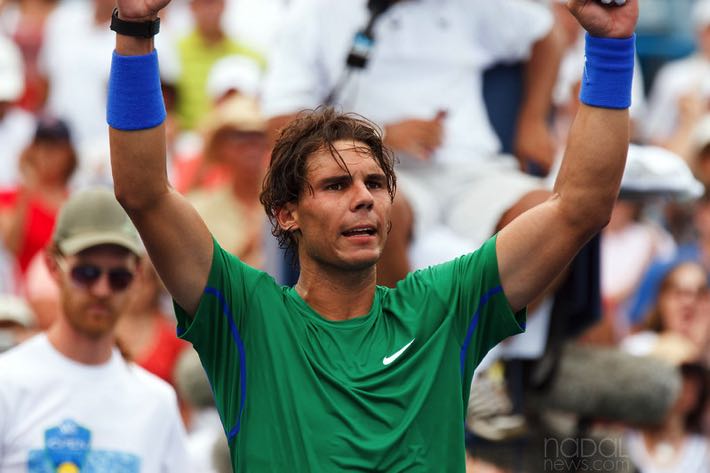
Though you might have expected to match to be something of an even split, that isn’t quite how things panned out. Given the exhibition nature of proceedings and the fact that only the Grand Slam events ask players to play over five sets in the men’s game, it is perhaps not all that surprising that the event took place over three sets. It did end up going the distance, though, proving that there was only a hair’s width between the two players when playing on the two different surface types that each of them enjoyed the most.
Rafael Nadal won the first set by seven games to five, meaning that Federer needed to pull out a big performance in the second set. He did just that, defeating Nadal by six games to four in order to send the match into a third and final set. That was a tight one, needing a tiebreak to separate the two players. Even the tiebreak wasn’t over quickly, with Nadal eventually taking it by 12 points to ten in order to seal victory in the Battle of the Surfaces by two sets to one. Sufficed to say, it wasn’t a walkover for either player.
What the Match Was Like
Knowing the result is one thing, but knowing how the match actually panned out is something else entirely. After all, what is the point in knowing about the attributes of the different surfaces if you don’t also know the part that they played in the eventual result. The answer is that the player at the clay end of the court got a clear advantage over their competitor. The clay surface meant that the ball was slowed down and bounced higher on the serve, allowing the player more time to adjust their body and line up the best shot.
This meant that the player on the grass side had less time to react, being moved around the court at will by their opponent. When the players changed ends, they were given two minutes instead of the usual 90 seconds, which was enough time for them to change their footwear in preparation for the new surface that they were going to be playing on. The need to adapt to a different surface took Federer longer to get used to than Nadal, leading to a number of unforced errors during the early period of the match that the Spaniard took full advantage of.
Will It Ever Happen Again?
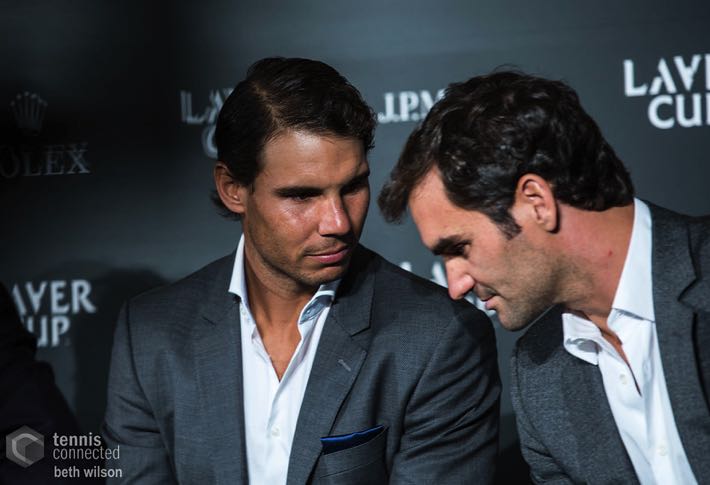
In the wake of the match on the unique tennis court, Rafael Nadal declared that it was a ‘nice experience’ that he would like to have again. He said, “I have had a good time and that is important. Both of us would like to repeat this experience because, although the match was not a real one, it allowed us to play for points without much tension and to play more relaxed.” That, of course, was much more about the fact that the pressure was off rather than the notion of it being particularly interesting to play on a court with a split surface.
In the 15 years that followed the event, however, there was no attempt to repeat it. This could be for several reasons, not the least of which was the fact that it cost around £1 million to build the unique playing surface. Given that it was never going to remain in situ as a permanent fixture, the sheer cost of building a split surfaced court in order to accommodate exhibition matches meant that it was always likely to be a one off. Playing without such pressure might have been fun for the players, but that alone wouldn’t justify spending such large amounts of money.
Of course, you should never say never. There are huge sums of money floating around certain countries, which look to use it in order to sports wash their reputations. The exact cost of hosting the World Cup in Qatar in 2022 is impossible to establish, for example, though it is believed by many that they could exceed $200 billion. Is it out of the realms of the possible that a state like Qatar or Saudi Arabia would pay what would be a relative pittance in order to bring big tennis stars to the country in a bid to change what people think of it? Certainly not if the likes of LIV Golf is anything to go by.